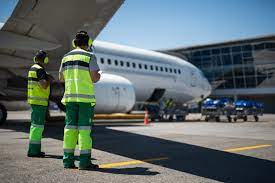
The aviation industry, a key driver of global connectivity and commerce, is facing a critical workforce shortage. A lack of qualified pilots, airline personnel, and airport staff is straining operations, affecting passenger satisfaction, and limiting industry growth. This crisis—worsened by pandemic disruptions, an aging workforce, and the rapid recovery of air travel—demands urgent solutions, including enhanced training programs, better working conditions, and technology-driven efficiencies.
The Growing Crisis: A Global Perspective
The shortage spans multiple roles, from pilots and cabin crew to maintenance technicians and air traffic controllers. While a worldwide issue, its severity varies by region. North America faces acute pilot shortages due to high retirement rates, whereas Asia-Pacific struggles with insufficient training infrastructure to meet demand.
1. Pilot Shortages: A Critical Challenge
- By the Numbers: The International Civil Aviation Organization (ICAO) projects a global need for 700,000 new pilots by 2040, but current training programs fall far short.
- Aging Workforce: In the U.S., nearly 5,000 pilots retire annually, exacerbating the talent gap, with pandemic-induced early retirements further straining supply.
- High Barriers to Entry: Pilot training costs range from $70,000 to $100,000, making it financially inaccessible for many aspiring aviators.
2. Airline and Airport Staff Shortages
- Ground Staff: Roles like baggage handlers and ramp agents suffer from high turnover due to low wages and demanding conditions.
- Maintenance Technicians: Skilled labor shortages impact aircraft safety and reliability, with 626,000 new technicians needed by 2040, according to Boeing.
- Cabin Crew Deficiency: Recruiting and retaining flight attendants is increasingly difficult, particularly for airlines requiring multilingual staff for international routes.
Factors Contributing to the Shortage
1. Pandemic Disruptions
Mass layoffs during COVID-19 led many skilled workers to exit aviation permanently, making rehiring a major challenge.
2. Rising Air Travel Demand
Passenger levels are projected to return to pre-pandemic numbers by 2025, but airlines and airports struggle to match this rapid growth.
3. Insufficient Training and Education
Flight schools and training programs cannot keep pace with demand, further limited by a shortage of experienced instructors.
4. Regulatory Constraints
Strict retirement ages and long certification processes slow workforce replenishment. Easing licensing restrictions could provide temporary relief.
5. Declining Job Appeal
Aviation roles, once prestigious, now face perceptions of being stressful and underpaid, discouraging younger generations from pursuing careers in the sector.
Impact on the Industry
1. Operational Disruptions
Staff shortages cause delays, cancellations, and inefficiencies, damaging airline reputations and customer trust.
2. Increased Costs
Airlines must invest more in hiring and training, while higher wages further strain budgets.
3. Safety Concerns
A lack of maintenance technicians increases risks, particularly for model airplanes and operational aircraft requiring frequent servicing.
4. Passenger Experience
Understaffed airlines struggle with long queues, misplaced baggage, and reduced service quality.
Solutions to the Workforce Crisis
1. Expanding Training Programs
- Airlines should partner with flight schools to offer affordable, fast-tracked training.
- Government-funded scholarships can improve accessibility.
2. Embracing Technology
- AI-powered automation can ease staffing pressures in check-in, baggage handling, and maintenance.
- Future developments in custom aircraft models and autonomous cargo aircraft could reduce pilot dependency.
3. Improving Compensation and Work Conditions
- Competitive salaries and better benefits enhance retention.
- Airlines offering profit-sharing schemes and flexible schedules see improved staff loyalty.
4. Regulatory Reforms
- Raising retirement ages and simplifying licensing for foreign professionals can help fill workforce gaps.
5. Promoting Aviation Careers
- School outreach programs can spark early interest in aviation.
- Diversity initiatives, such as Girls in Aviation Day, encourage underrepresented groups to enter the field.
Innovation’s Role in Addressing the Crisis
1. Next-Generation Aircraft
Advanced model airplanes with longer maintenance intervals can reduce reliance on skilled labor.
2. AI-Driven Solutions
Predictive maintenance and AI-assisted operations can enhance efficiency and compensate for workforce shortages.
3. Virtual Reality (VR) Training
VR-based training accelerates skill development for pilots and technicians.
4. Sustainable Practices
Green technologies can create new job opportunities, attracting eco-conscious candidates.
Opportunities for Aspiring Pilots
With demand at an all-time high, airlines and flight schools are offering incentives to attract new talent:
- Scholarships & Financial Aid: Many airlines now provide funding to reduce training costs.
- Fast-Track Programs: Accelerated training courses are helping pilots enter the workforce faster.
- Global Hiring: Airlines worldwide offer competitive packages and relocation support.
- Career Stability & Growth: High demand ensures job security and long-term career advancement.
Conclusion
The aviation workforce shortage is a pressing challenge requiring immediate, multi-faceted solutions. Expanding training, improving work conditions, and leveraging innovation will be crucial to ensuring the industry’s resilience and long-term growth. By integrating advanced custom aircraft models and AI-driven operations, the sector can build a stronger, more sustainable workforce ready to meet the future of aviation.